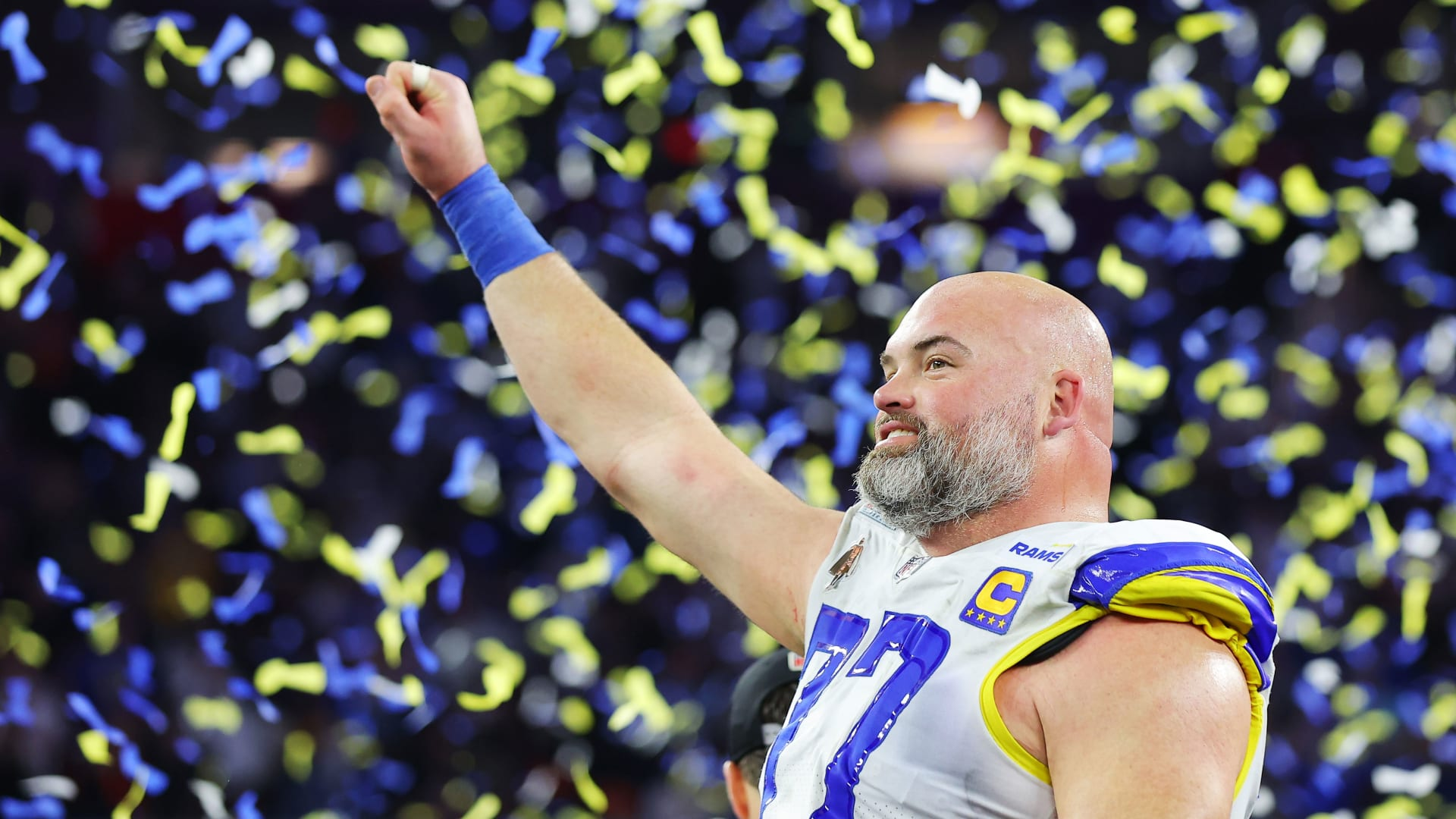The Los Angeles Rams Used a Simple Rule of Psychology to Win the Super Bowl. Call it soft if you want: The Los Angeles Rams just proved positive psychology works.

Sun, Feb 13,2022 Super Bowl
BY JUSTIN BARISO, AUTHOR, EQ APPLIED@JUSTINJBARISO
"Who says nice guys finish last? Last night, the Los Angeles Rams defeated the Cincinnati Bengals in Super Bowl LVI to become the newly crowned NFL champions. In post-game interviews, Rams players and coaches shared their thoughts on what they believed contributed to their championship season. You heard familiar phrases like "I knew this was a special team," and "we trusted one another to go out there and get it done." But one player's take on the Rams' organizational culture stood out. It was from the team's oldest player, offensive tackle Andrew Whitworth -- who at 40 years old is the oldest active player in the NFL."I think this is a unique environment," Whitworth said in a postgame interview, speaking about the culture Rams coach Sean McVay and his staff have built. "We're relaxed. We have fun. It's energetic. We don't have coaches out there screaming at people. That's not allowed on our field. It's about having energy and positivity and belief that no matter what happens on one snap, the next snap's the next best one you can have." Whitworth said he believes it's this environment that helped the Rams reach their full potential: "I think guys come in, they believe in it, and they appreciate that opportunity to be in an environment where they're encouraged to just be themselves and go out and do what they do."For years, coaches across sports have become known for their domineering, drill-sergeant-like approach. But for several decades, psychologists have studied the value in a more emotionally intelligent coaching style, one that focuses on positive reinforcement. I like to call this "the rule of positive psychology." Let's break down how the rule of positive psychology works, how the Rams used it to their advantage, and what companies can learn from it to build an emotionally intelligent culture where teams thrive. (If you find value in the rule of positive psychology, you might be interested in my full emotional intelligence course. Check out the course here.)
How the rule of positive psychology helps build stronger teams
The rule of positive psychology is simple. It basically states: When you build an environment focused on nurture, positive reinforcement, and highlighting strengths and potential, you help people to be the best version of themselves. It was back in the 1950s that psychologist Gordon Allport began questioning why much of psychological theory focused on the behavior of sick and anxious people, and why many studies were of criminals instead of law abiders or focused on unhealthy emotions rather than healthy ones. Since that time, more and more psychologists, researchers, and therapists have begun studying examples of healthy human behavior and the value of positive reinforcement. It is principles like these that inform the rule of positive psychology. The Rams aren't the only professional sports team to embrace the positive psychology movement. In the NBA, the Golden State Warriors are also known for having a relaxed, fun atmosphere where music, humor, and friendly competitions between coaches and players help create a positive culture. No surprise that those Warriors also made it to the NBA finals five years in a row in recent years, winning three championships along the way. But how do you follow the rule of positive psychology in your organization? It's easier said than done, but you can start by implementing a few more rules at your workplace.
For example: The help-first rule: If you're in a difficult situation, and you notice someone else is too, try helping first. (Read more about the help-first rule here.)
The rule of recognition: Your default setting is to focus on what a person does right, and to make a point to commend the person for those positive actions, sincerely and specifically. (Read more about the rule of recognition here.)
The rule of turning critical into constructive: Transform your critical feedback by adding one word. Ask: "Can I share some constructive feedback with you?" (Read more about how to turn critical into constructive here.)
The rule of disagree and commit: Start with open, honest discussion and voice healthy disagreement. However, once a decision is made, any who still disagree must "commit;" they should fully support the decision and try their best to make it work. (Read more about the rule of disagree and commit here.)
The rule of reappraisal: When you feel overwhelmed, don't focus on what you have ahead of you. Instead, look back on what you have already accomplished and use that to motivate you. (Read more about the rule of reappraisal here.)These rules are just a start, to help get you moving in the right direction. The key is to recognize that culture doesn't just happen. You have to implement processes, habits, and rules that everyone follows, top to bottom. And acknowledge that the best foundation you can build upon is a positive one. So, if you're leading a team, why not take a page out of the Rams playbook and follow the rule of positive psychology? Because if there's anything Super Bowl LVI taught us, it's that the "nice" approach may be exactly what you -- and your team -- need the most. "
INC.